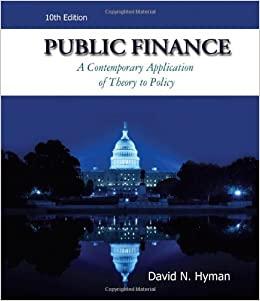Answered step by step
Verified Expert Solution
Question
1 Approved Answer
What are the differences in the ways Elizabeth Eustace and Lucy Morris have advocated their respective projects? How might those differences in style have affected
What are the differences in the ways Elizabeth Eustace and Lucy Morris have advocated their respective projects? How might those differences in style have affected the outcome of the decision? Page CASE Victoria Chemicals PLC B: The Merseyside and Rotterdam Projects James Fawn, executive vice president of the Intermediate Chemicals Group ICG of Victoria Chemicals, planned to meet with his financial analyst, John Camperdown, to review two mutually exclusive capital expenditure proposals. The firm's capital budget would be submitted for approval to the board of directors in early February and any projects Fawn proposed for the ICG had to be forwarded to the CEO of Victoria Chemicals soon for his review. Plant managers in Liverpool and Rotterdam had independently submitted expenditure proposals, each of which would expand the polypropylene output of their respective plants by or tons per year Victoria Chemicals' strategic analysis staff argued strenuously that a companywide increase in polypropylene output of tons made no sense but half that amount did. Thus Fawn could not accept both projects; he could sponsor only one for approval by the board. Corporate policy was to evaluate projects based on four criteria: net present value NPV computed at the appropriate cost of capital, internal rate of return IRR payback, and growth in earnings per share. In addition, the board of directors was receptive to strategic factorsconsiderations that might be difficult to quantify. The manager of the Rotterdam plant, Elizabeth Eustace, argued vociferously that her project easily surpassed all the relevant quantitative standards and that it had important strategic benefits. Page Indeed, Eustace had interjected those points in two recent meetings with senior management and at a cocktail reception for the board of directors. Fawn expected to review the proposal from Lucy Morris, manager of Merseyside Works, the Liverpool plant, at the meeting with Camperdown, but he suspected that neither proposal dominated the other on all four criteria. Fawn's choice would apparently not be straightforward. The Proposal from Merseyside, Liverpool The project for the Merseyside plant entailed enhancing the existing facilities and the production process. Based on the type of project and the engineering studies, the potential benefits of the project were quite certain. To date, Morris had limited her discussions about the project to conversations with Fawn and Camperdown. Camperdown had raised exploratory questions about the project and had presented preliminary analyses to managers in marketing and transportation for their comments. The revised analysis emerging from those discussions would be the focus of Fawn's discussion with Camperdown in the forthcoming meeting. Camperdown had indicated that Morris's final memo on the project was only three pages long. Fawn wondered whether this memo would satisfy his remaining questions. The Rotterdam Project Elizabeth Eustace's proposal consisted of a page document replete with detailed schematics, engineering comments, strategic analyses, and financial projections. The basic discounted cash flow DCF analysis presented in Exhibit shows that the project had an NPV of GBP million and an IRR of Accounting for a worstcase scenario, which assumed erosion of Merseyside's volume equal to the gain in Rotterdam's volume, the NPV was GBP million.EXHIBIT Analysis of Rotterdam Project financial values in GBP millions Assumptions Annual Output met tons Output Gain Per Yerior Year Maximum POS Output PricaTon pounds stering Inflation prices and cost Gross Margin Growth RateYear Maximum Pos Gross Margin Gross Margin Tax Rate Investment Otay milions Discount Rate Depreciate Line years Overdesment Salvage Value WP inventory Cost of Goods Sold Terminal Value of RightofWay Month Downtime Construction Now Now Year Estimate of incrementa Gross Pro New Output on Lost OutputConstruction New Sales Man New Gross Margin New Gross Pro a O O DOS OOS Old Output Old Sales Old Gross Pro incrementa Gross Profit Estimate of incrementa Depreciation YO Outlys Yr Outlays Yr Outlays Total, New Depreciation Overhead Pretax increment Prom Tax Expense Artertex Pro Cash Adjustments Add Back Depreciation Less A WIP Inventory Lens Capital Spending Terminal Value, Land Free Cash Flow o O
Step by Step Solution
There are 3 Steps involved in it
Step: 1

Get Instant Access to Expert-Tailored Solutions
See step-by-step solutions with expert insights and AI powered tools for academic success
Step: 2

Step: 3

Ace Your Homework with AI
Get the answers you need in no time with our AI-driven, step-by-step assistance
Get Started


